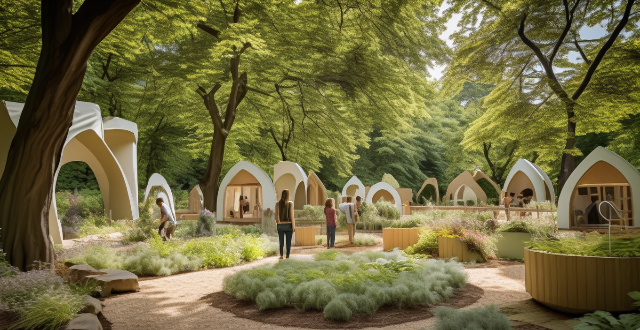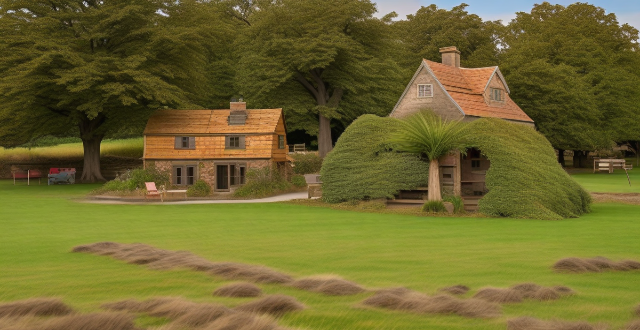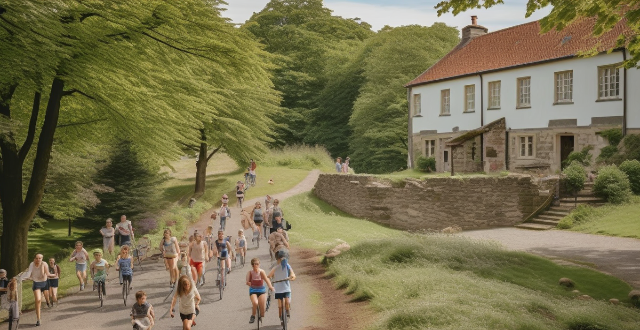Visit Local

How do I find less crowded photography spots in popular tourist locations ?
To find less crowded photography spots in popular tourist locations, conduct research beforehand using Google Maps, social media, local blogs, and travel guides. Upon arrival, visit the tourist information center and ask locals for recommendations. Consider visiting during off-peak hours and look for alternative viewpoints or angles. Keep an eye on weather conditions and be flexible with your plans. During your visit, wake up early, stay out late, use long exposures, seek elevated positions, utilize natural barriers, be patient, and edit later if necessary.

What is the best time of year to visit heritage sites ?
The best time to visit heritage sites is often during the shoulder seasons of spring and autumn, offering mild weather, fewer crowds, and vibrant flora. Spring brings blooming gardens and natural landscapes while autumn showcases fall foliage. Summer, though peak tourist season with longer daylight hours, can be hotter and more crowded. Winter provides a unique atmosphere with holiday events but requires proper clothing for cold weather. Shoulder seasons and weekdays generally offer less crowded experiences, and local events can enrich visits. Budget-wise, off-peak travel can save on costs. Ultimately, the ideal time depends on individual preferences for weather, crowds, and budget.

How can I make the most of my visit to a heritage site ?
Heritage sites are places that have cultural, historical, or natural significance. To make the most of your visit to a heritage site, you need to plan ahead, be prepared, and engage with the site in meaningful ways. This guide explores tips and strategies for preparation, on-site experience, and post-visit reflection. By following these tips, you can have a meaningful and enriching experience that enhances your understanding and appreciation of the heritage site.

What is the best time of year to visit Africa for an adventure trip ?
The best times to visit Africa for an adventure trip vary by region and activity. East African countries like Kenya, Tanzania, and Uganda are best visited from June to October during the dry season, ideal for safaris and hiking. Southern Africa, including South Africa, Botswana, Zambia, and Zimbabwe, is suitable for visits from May to September, offering great opportunities for safaris and water sports. West Africa, encompassing Ghana, Nigeria, and Senegal, is recommended from November to February for historical tours, cultural experiences, and beach relaxation. Overall, the dry season from May to October is generally considered the best time for outdoor activities across most of Africa.

How can I find authentic local cuisine when traveling ?
The text provides a comprehensive guide on how to find authentic local cuisine when traveling. It suggests researching before the trip, asking locals, exploring markets, dining with locals, trying regional specialties, taking cooking classes, using technology, and being adventurous. The guide emphasizes the importance of stepping out of one's comfort zone to enjoy new flavors and dishes.

What are the best times of year to visit popular island destinations ?
Visiting popular island destinations can be a dream come true for many travelers. However, the experience can vary greatly depending on the time of year you choose to go. Here are some tips on the best times to visit popular island destinations: ## **Hawaii** - ### **Best Time to Visit** The best time to visit Hawaii is during the summer months (June to August) when the weather is warm and sunny. This is also the peak season, so expect higher prices and larger crowds. - ### **Things to Do** During your visit, don't miss out on hiking to Diamond Head State Monument, visiting Pearl Harbor National Memorial, or taking a surfing lesson at Waikiki Beach. - ### **What to Pack** Pack light and comfortable clothing, sunscreen, sunglasses, and a hat. Don't forget your swimsuit and flip flops too! ## **Maldives** - ### **Best Time to Visit** The best time to visit the Maldives is from December to April when it's dry season and the weather is sunny and warm. - ### **Things to Do** While in the Maldives, make sure to go snorkeling or diving in the crystal-clear waters, relax on one of the many beautiful beaches, or take a boat trip to explore the nearby islands. - ### **What to Pack** Pack light and airy clothes, sunscreen, sunglasses, and a hat. Don't forget your swimsuit and flip flops too! ## **Bali (Indonesia)** - ### **Best Time to Visit** The best time to visit Bali is between May and September when it's dry season and the weather is sunny and warm. - ### **Things to Do** While in Bali, make sure to visit the Tegalalang Rice Terrace, watch a traditional Balinese dance performance, or take a surfing lesson at Kuta Beach. - ### **What to Pack** Pack light and comfortable clothing, sunscreen, sunglasses, and a hat. Don't forget your swimsuit and flip flops too!

What are the most popular local experience activities in New York City ?
New York City offers a variety of local experience activities, including sightseeing tours, food and drink experiences, outdoor activities, cultural experiences, and shopping experiences. Visitors can explore iconic landmarks like the Statue of Liberty and Central Park, taste local cuisine on food tours, enjoy wine tasting and brewery tours, bike or hike in scenic locations, visit world-renowned museums and theaters, and shop at flea markets, antique stores, and local boutiques.
![What are the best places to eat like a local in [insert city/country] ?](/images/2kge/2befbfac-8832-4928-9125-7d71418d7604.png)
What are the best places to eat like a local in [insert city/country] ?
In this guide, we explore the best places to eat like a local in [insert city/country], from street food vendors and hole-in-the-wall restaurants to bustling markets and bazaars. These spots offer authentic flavors and a taste of the local culture, making them must-visit destinations for anyone looking to truly experience the local cuisine. Whether you're in the mood for fresh seafood or bold flavors, there's sure to be something that satisfies your cravings. So come hungry and get ready to indulge in some delicious local fare!

How can I find local experience activities that support sustainable tourism ?
Finding local experience activities that support sustainable tourism is crucial for travelers who want to make a positive impact on the communities they visit. Here's how to do it: 1. **Research Online**: Use sustainable travel portals like Responsible Travel and Green Globe, and check local tourism boards and conservation groups for eco-friendly activities. 2. **Social Media and Forums**: Join travel communities on Facebook and Reddit, and follow influencers and bloggers who focus on sustainable travel for recommendations. 3. **Local Guidebooks and Magazines**: Look for specialized publications like "The Sustainable Travel Handbook" and local magazines featuring eco-friendly activities. 4. **Directly Contact Local Businesses**: Reach out to eco-friendly accommodations like eco-lodges and farm stays, and inquire at local restaurants, especially those focusing on farm-to-table or vegetarian options. 5. **Attend Local Events and Fairs**: Participate in environmental festivals and cultural fairs, and visit farmers markets and artisan markets for insights into sustainable activities. 6. **Use Mobile Applications**: Download apps like EcoCompanion and Book Different to find unique and sustainable accommodations and activities. 7. **Work with Local Guides**: Hire sustainable tour guides and participate in community-based tours that support local economies and conservation efforts. By employing these strategies, you can ensure your travels not only enrich your personal experiences but also contribute positively to the environment and local communities, promoting sustainable tourism practices.

How can I support local and organic farming ?
Supporting local and organic farming is crucial for the environment, sustainable agriculture, and community development. To contribute, you can buy local and organic products, volunteer or participate in farming activities, and educate yourself and others about sustainable practices. By making informed choices, you can make a significant impact on supporting local and organic farming.

What are some local experience activities that allow me to learn about the culture ?
The text discusses various ways to explore and appreciate local cultures through immersive experiences and activities. These include culinary adventures, art and craft workshops, music and dance performances, festivals and celebrations, historical tours and museum visits, nature and landscape exploration, and community interaction. Each of these activities offers unique insights into the traditions, beliefs, and daily life of local communities, allowing travelers to gain a deeper understanding and appreciation of the cultures they encounter.

Where can I find a map of local cycling routes ?
Cycling is an excellent way to explore your local area, stay fit, and enjoy the outdoors. If you're looking for maps of cycling routes near you, here are some resources that can help: City or Local Government Websites Cycling Clubs or Groups Online Cycling Communities Local Bike Shops Tourism Information Centers Smartphone Apps Google Maps Social Media Library or Bookstore Outdoor Recreational Maps Word of Mouth Remember to always check the condition of the route before heading out, as well as the weather forecast and any potential hazards along the way. Happy cycling!

How do I respectfully engage with local cultures during my travels ?
Traveling respectfully involves research, mindful behaviorTraveling respectfully involves research, mindful behavior culture, engaging with locals It's important to learn about local customs and language before arriving, dress appropriately, and respect local customs. Engage with the locals by starting conversations and asking for permission before taking photos. Show interest in the local culture by visiting markets and attending cultural events. Be respectful of the environment by following local laws and regulations and leaving no trace. By following these tips, you can ensure your travels are enjoyable and respectful of the local cultures you encounter.

How often should I visit a sports rehabilitation center after an injury ?
The frequency of visits to a sports rehabilitation center after an injury depends on factors like the severity of the injury, individual healing capacity, and recommended treatment plan. Major injuries may require daily sessions initially, while minor injuries might need weekly visits. Individual healing rates also play a role, with some needing more time and support. The treatment plan outlines the recommended visit frequency and necessary interventions. Regular progress tracking helps determine if adjustments are needed. It's crucial to work closely with healthcare professionals for an effective rehabilitation process.

How do I find unique local experience activities when traveling ?
When traveling, immersing yourself in unique local experiences is a fantastic way to connect with a new culture. Here's how you can find these special activities: 1. **Research Online**: Use travel websites and apps like TripAdvisor, Airbnb Experiences, and GetYourGuide. Join local Facebook groups for insider tips. 2. **Ask Locals**: Hotel staff, hosts, and people in cafes often have great recommendations. 3. **Visit Local Tourism Offices**: Information centers and kiosks provide maps, brochures, and advice on lesser-known activities. 4. **Explore on Foot**: Take walking tours or wander off the beaten path to discover hidden gems. 5. **Look for Local Events and Festivals**: Check event calendars and attend cultural celebrations for a deep dive into local heritage. 6. **Use Guidebooks Selectively**: Choose guidebooks focusing on off-the-beaten-path experiences and verify information online. 7. **Consider Alternative Accommodations**: Staying with locals or at farm stays can offer unique experiences. 8. **Be Open to Serendipity**: Embrace spontaneity and negotiate directly with locals for unexpected opportunities. By employing these strategies, you can find and enjoy unique local experiences that will make your travels memorable.

What are some local experience activities that involve food and drink ?
The text provides a summary of various local experience activities involving food and drink. These include cooking classes, food market tours, brewery and winery visits, culinary walking tours, farm-to-table dinners, food festivals, ethnic cuisine experiences, private dining experiences, gourmet safaris, and interactive restaurant concepts. Each activity offers a unique way to explore local cuisine and culture, providing insights into the daily life of locals and their eating habits.

How can I immerse myself in the daily life and traditions of South Americans ?
To immerse in South American daily life and traditions, learn Spanish or Portuguese, stay with locals, explore local cuisine, participate in arts and crafts, travel off the beaten path, and understand history and society through museum visits and intellectual exchange.

How do I choose the right local experience activity for me ?
Choosing the right local experience activity requires careful consideration of your interests, research, recommendations, safety, and comfort levels. Here are some tips to help you make an informed decision: 1. Identify your interests and preferences before choosing a local experience activity. 2. Research local options that align with your interests and consider factors such as location, duration, cost, availability, and language barriers. 3. Read reviews from previous participants and ask for recommendations from friends or family who have visited the destination before. 4. Ensure that the activity meets your safety and comfort levels, taking into account any health concerns or physical limitations. 5. Book in advance to secure your spot and plan your itinerary accordingly. By following these steps, you can find an enjoyable and memorable experience that suits your preferences while exploring a new destination.

How do food festivals contribute to local economies ?
Food festivals significantly boost local economies by attracting tourists, stimulating local businesses, enhancing brand recognition, fostering community development, improving infrastructure, and increasing tax revenue.

How does street food influence local cuisine and culture ?
Street food is a crucial element of local cuisine and culture, offering accessibility, diversity, economic benefits, cultural preservation, social interaction, and global influence. It supports local agriculture, encourages innovation, fosters community bonding, and attracts tourism, thereby shaping the culinary scene and cultural identity of a city.

What are the must-visit romantic honeymoon destinations in Asia ?
Asia boasts numerous romantic honeymoon destinations perfect for couples seeking a blend of natural beauty, cultural experiences, and luxurious amenities. From the pristine beaches of Bali and Maldives to the historic temples of Kyoto and Siem Reap, each location offers unique experiences tailored for an unforgettable honeymoon. Other highlights include the volcanic landscapes of Jeju Island, the winter wonderland of Niseko, the cultural heart of Ubud, the northern Thai charm of Chiang Mai, and the scenic cruising opportunities in Ha Long Bay. These destinations ensure a honeymoon filled with love, relaxation, and adventure.

What is the significance of festivals and celebrations in shaping local snack traditions ?
Festivals and celebrations play a crucial role in shaping local snack traditions by fostering community building, cultural exchange, preservation of traditions, economic impact, and innovation and creativity. These events bring people together, share culinary traditions, preserve heritage, support local economies, and inspire new recipes and dishes.

How can I experience a country's culture through its food ?
Experiencing a country's culture through its food is an immersive way to learn about traditions, history, and lifestyle. To do so, one can visit local markets and eateries, take cooking classes from local chefs, join food tours for guided adventures or off-the-beaten-path exploration, and research local cuisine through books, blogs, and online forums. This allows for a deeper understanding of the stories behind dishes, the people who create them, and the environment that nurtures them.

How does food tourism impact local economies and cultures ?
Food tourism, also known as culinary or gastronomy tourism, has significant impacts on local economies and cultures. Economic benefits include job creation, increased revenue for local businesses, tourism diversification, infrastructure development, and value addition to local products. Culturally, food tourism promotes the preservation of traditions, cultural exchange, heritage promotion, adaptation and innovation, and community engagement. However, there are potential downsides such as overcommercialization, resource depletion, and pricing issues that require careful management to ensure authenticity and sustainability.

How much does it cost to maintain a burglar alarm system ?
The article discusses the cost of maintaining a burglar alarm system, which includes the type of system (wired or wireless), level of monitoring required (self-monitoring, basic monitoring, advanced monitoring), and frequency of maintenance visits. The estimated costs range from installation ($500 to $2,000) to monthly monitoring fees ($30 to $100 per month) and maintenance visits ($75 to $150 per visit). It is essential to understand these factors to budget for the safety and security of your home or business.

How can I learn about a culture through its cuisine during my travels ?
Exploring a culture through its cuisine during travels can be achieved by embracing local eateries, visiting markets, taking cooking classes, dining with locals, attending food festivals, reading and researching, and asking questions. This immersive experience allows travelers to understand the history, traditions, and essence of a place through every dish and ingredient.

How does eco-tourism impact local communities ?
Eco-tourism, a form of sustainable tourism, focuses on responsible travel to natural areas that conserves the environment and improves the well-being of local people. It has a positive impact on local communities in various ways, including economic benefits such as job creation, income generation, infrastructure development, and foreign exchange earnings. Eco-tourism also promotes environmental conservation by encouraging sustainable practices among local communities, such as habitat protection, wildlife conservation, and education on sustainable practices. Additionally, it helps preserve cultural heritage by showcasing local traditions, customs, and way of life, as well as promoting cultural exchange and artisan development. Finally, eco-tourism contributes to social development by improving healthcare access, creating education opportunities, promoting gender equality, and empowering local communities through involvement in decision-making processes related to tourism development and management.

How does global shopping affect local businesses ?
Global shopping has become increasingly popular due to the rise of e-commerce platforms and international shipping services. While it offers consumers a wider range of products and competitive prices, it also poses challenges for local businesses such as increased market competition, job displacement, cultural homogenization, environmental impact, intellectual property rights issues, and economic dependency. As consumers continue to embrace global shopping, it is crucial for local businesses to adapt and find ways to differentiate themselves in order to remain competitive and sustainable in the long run.

How much do local experience activities usually cost ?
The cost of local experience activities can vary widely depending on factors such as location, duration, exclusivity, group size, timing, and inclusions. Guided walking tours, workshops, cultural events, and outdoor adventures all have different price ranges, but there are ways to save money such as booking in advance, taking advantage of group discounts, combining tickets, looking for local deals, and exploring free options. By considering these factors and utilizing tips for saving money, you can enjoy enriching experiences without breaking the bank.

How can I find unique experiences in a city during a weekend trip ?
This text provides a guide on how to find unique experiences in a city during a weekend trip. It suggests researching local events and festivals, engaging with locals, exploring offbeat neighborhoods, trying unique lodging options, taking part in activities led by local experts, and embracing spontaneous adventures. The text emphasizes the importance of stepping away from popular tourist trails and immersing oneself in the local culture for a more authentic travel experience.